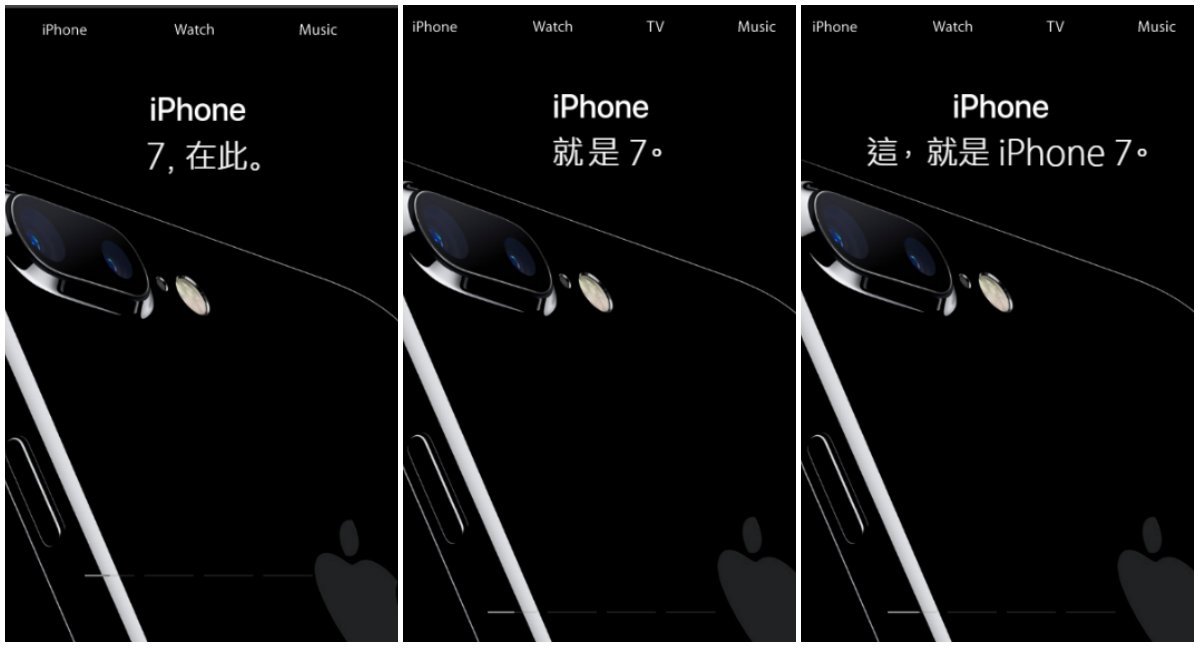mobile
Bot Gender
By creating interactions that encourage consumers to understand the objects that serve them as women, technologists abet the prejudice by which women are considered objects. They may overlook this hazard in part because these workers are, for the most part, men. The field of artificial intelligence has been accused of still lower gender diversity than the tech sector generally. Although women held fifty-seven per cent of all professional jobs last year, they held only a quarter of computing jobs; Latina and black women held just one and three per cent of those jobs, respectively. Fei-Fei Li, a professor of computer science at Stanford who helped pioneer computer vision, has recently advocated for greater diversity among A.I. workers, including gender diversity, citing the biases that have plagued machine-learning algorithms.
Source: The Bot Politic – The New Yorker
Virtual Assistants & Chatbots in 2017
Experimentation with voice-activated assistants and text-triggered chatbots blossomed in 2016, enabling users to order from Taco Bell using Slack’s messaging interface, check the status of UPS packages and order office supplies from Staples. In 2017, some of these tools won’t make the cut while others will proliferate across consumer and enterprise sectors, creating new workflows, operational efficiencies and opportunities for improved customer service.
Source: Virtual assistants, chatbots poised for mass adoption in 2017 | CIO
Smartphone Phubbing
We zeroed in on measuring something called “phubbing” (a fusion of “phone” and “snubbing”). It’s how often your romantic partner is distracted by his or her smartphone in your presence. With more and more people using the attention-siphoning devices—the typical American checks his or her smartphone once every six-and-a-half minutes, or roughly 150 times each day—phubbing has emerged as a real source of conflict. For example, in one study, 70% of participants said that phubbing hurt their ability to interact with their romantic partners.
Samsung Galaxy Note 7 Battery Explosions
In September, the first reports of Samsung Galaxy Note 7 batteries exploding hit social media. At first, Samsung identified the issue as one relating to the lithium polymer battery manufacturing process by Samsung SDI, where too much tension was used in manufacturing, and offered to repair affected phones. But several weeks later, some of the batteries in those replacement units also exploded once they were in the hands of customers — causing Samsung to make the bold decision to not only recall everything, but to cancel the entire product line. . . . If it were only a battery part issue and could have been salvaged by a re-spin of the battery, why cancel the product line and cede several quarters of revenue to competitors? We believe that there was more in play: that there was a fundamental problem with the design of the phone itself.
Source: Aggressive design caused Samsung Galaxy Note 7 battery explosions — Instrumental Millions of Things
Google Assistant to Be a ‘Star Trek’ Computer
Google is threatened by the decline of web search, so it’s making a bold bet on what comes next: an all-knowing digital helper.
Source: A High-Stakes Bet: Turning Google Assistant Into a ‘Star Trek’ Computer – The New York Times
Smart Skin

Researchers develop a wearable technology that can detect magnetic fields and translate the signal into a visual display—a first step toward equipping humans with an entirely new sense.
See also:
DuoSkin:Functional, stylish on-skin user interfaces from MIT Media Lab on Vimeo.
Mobile Apps Rule
Mobile apps are taking over the digital world, according to research on the amount of time US consumers spend with media. eMarketer estimated earlier this month that 85.7% of nonvoice time spent with smartphones was spent with apps, as opposed to just 14.3% spent on the mobile web.
Ads on Instagram
I’m human, so I look at Instagram every twenty minutes. Between all the friends and acquaintances and nail artists I follow, there are usually ads—this much I’ve gotten used to, though I was once shocked by it. But recently I’ve noted there are TONS of them, and from real brands, not just pixelated vitamin suppliers. There are ads for cheesy-looking new ABC shows, close-captioned Walmart sponsored video posts, and Delta ads that are also somehow Amex ads featuring Tegan and Sara. They’re coming hard and fast down the pike, especially now that the timeline isn’t even a goddamn timeline.
Source: Instagram Is The New TV
Snap Specs
THERE ARE TWO important new things to know about Snapchat. First, it’s just Snap now. That’s easy enough. The second may be a little bit harder to process: The ephemeral chat mavens will sell video-grabbing sunglasses, called Spectacles, starting this fall.
Source: Snapchat’s Wild New Specs Won’t Share Google Glass’s Fate | WIRED
Google’s Allo
For us, the users, the key detail might be the one that’s also easiest to take for granted: the new paradigm of bringing a virtual assistant into chats you’re already having, as you can now do simply by typing “@google” when you’re chatting with a friend. “That’s transformative,” says Cornwell, who has been working with bot UIs ever since he graduated from college, more than a decade ago. That would solve the two biggest problems about apps—getting people to spread them, and getting them to actually use them. Cornwell believes that we’ve reached “peak app” and that we’re due for a paradigm shift in computing—one with that makes services easier to build and spread.
Source: Inside The Making Of Allo, Google’s AI-Powered Messaging App | Co.Design | business + design
Wearable Engagement
Wearable technology has become an enabler in supporting a more active and healthy lifestyle for consumers. A status symbol, motivational fitness piece and functional gadget all in one, these smart devices are attached to consumers 24/7, providing new ways for brands to connect with their consumers.
Source: Wear and Share: How Wearable Devices are Reshaping Direct Marketing Opportunities
Web Surfing Schedules
In most markets, products and services compete for the consumer’s money. On the internet, however, the coin of the realm is time, not money—websites and other online services fight for the attention of visitors. So understanding when, how, and for how long we allocate our scarce time for activities is crucial to online success.
Source: Web Surfers Have a Schedule and Stick to It – HBS Working Knowledge – Harvard Business School
See: The Empirical Economics of Online Attention
photo credit: Informed Kitty via photopin (license)
How Millennial Media Habits Change
Millennials don’t have a uniform media palate. Their lives are in rapid transition as they finish their educations, join the workforce, move into their own homes and start families. And how they connect and what they connect with follows suit.
A Killer App for VR?
Even if the HoloLens, Rift, and Vive don’t themselves grow into the kind of mass-appeal gadgets that inspire mainstream acceptance, the breakthrough solutions they offer could lead to generations of ever-more-sophisticated VR products. And to be sure, the devices make you gasp with wonder when you use them for the first time; it’s one thing to read about the promise of virtual reality, and quite another to experience how utterly transporting the technology can be.
Source: What The First Mac’s Failure Teaches Us About VR | Co.Design | business + design
See Also: Insights: Dancing By Ourselves And The Unbearable Aloneness Of Being (Virtual)
Laughing at the iPhone 7 in Hong Kong
Already, Hong Kongers are enjoying the gaffe. “Without a 3.5mm earbud jack, this is exactly penis,” one Hong Konger, who is apparently not happy with iPhone’s new design philosophy, commented under a Facebook post about the Chinese translations of the slogan that already has 39,000 reactions.
Source: The slogan for Apple’s (AAPL) new iPhone 7 translates into “This is penis” in Hong Kong — Quartz
Lovin’ the New iPhone 7 camera
We are splintering what was the “camera” and its functionality—lens, sensors, and processing—into distinct parts, but, instead of lenses and shutters, software and algorithms are becoming the driving force. And this is not just happening on smartphone cameras. You can expect the software to define and enhance what lenses, sensors, and processing units in other settings can do. Dash cams, security cams, adventure cams, driving cams—these are just early examples of devices that have specific applications, cameras that could become much more powerful in the future. In the coming era of augmented and virtual reality, these new cameras will also create content to be consumed within V.R. headsets like Oculus and Magic Leap.
Source: With the iPhone 7, Apple Changed the Camera Industry Forever – The New Yorker
Dissing the New iPhone 7
Apple has squandered its once-commanding lead in hardware and software design. Though the new iPhones include several new features, including water resistance and upgraded cameras, they look pretty much the same as the old ones. The new Apple Watch does too. And as competitors have borrowed and even begun to surpass Apple’s best designs, what was iconic about the company’s phones, computers, tablets and other products has come to seem generic.
Source: What’s Really Missing From the New iPhone: Cutting-Edge Design – The New York Times
Digital Marketing
Savvy marketers use “brand lift” to measure advertising resonance beyond just reach metrics, and rightfully so. Brand lift measures the percentage increase in the primary marketing objective (e.g., awareness, favorability and purchase intent) that a brand advertising campaign drives. It’s a pretty significant metric. In fact, 73% of marketers consider brand lift the most appropriate metric for measuring brand advertising resonance.
Source: Reaching the Desired Audience Doesn’t Always Mean the Digital Campaign Will Resonate
Back to Living Room TV
Despite the fact that television is embracing multiscreen, the living room TV set is how most viewers watch today. Adobe’s TV Everywhere report for Q2 2016 showed that TV connected devices (TVCDs) have become staples within households for TVE consumption. When we looked at TVE viewing and the change in time spent by device for instance, TVCDs grew 149% year-over-year (YoY), topping browsers, Android and iOS.
Source: TV Everywhere is Coming Back to the Living Room — Adobe Primetime Blog
Goodbye Mobile Avengers
If Disney can’t succeed with a mobile game, then you know that the $36 billion mobile game market is truly difficult.
















